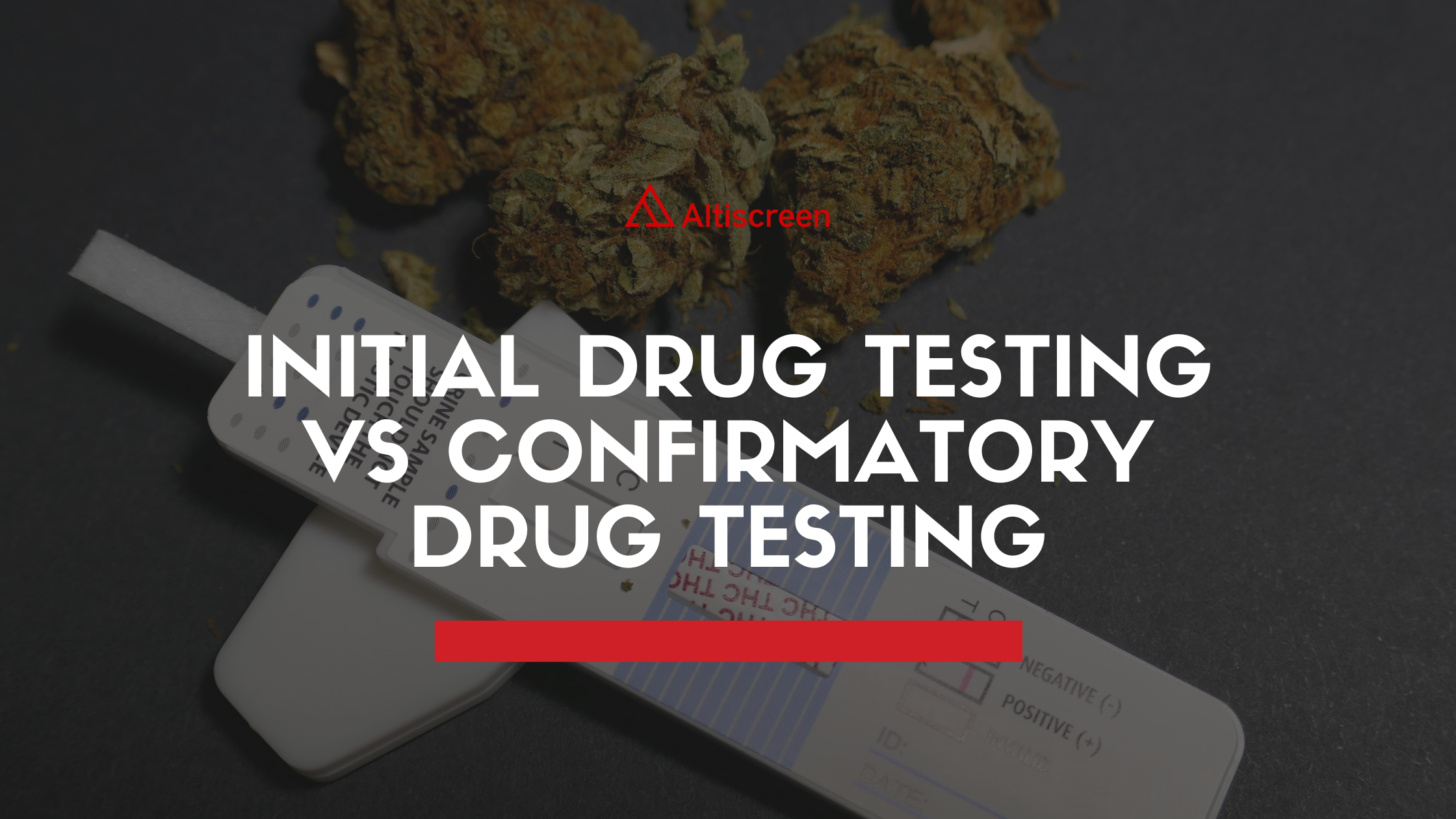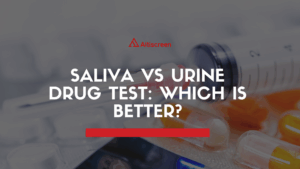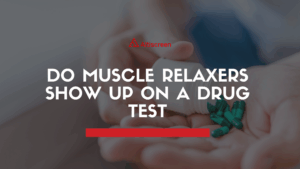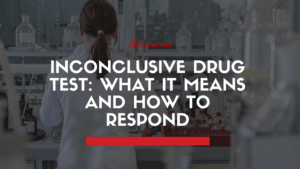Initial Drug Testing vs Confirmatory Drug Testing
How does drug testing work?
Drug testing detects the presence of drugs and drug metabolites in the body using drug test cutoff levels to determine whether or not a person consumed drugs. Drug testing may be used to detect illicit drugs (e.g. cannabis, cocaine, ecstasy, meth), as well as over the counter and prescription medication (e.g. morphine) not permitted while driving, or in specific workplaces.
For workplace and roadside drug testing, the standard procedure involves an initial screen and if the results are positive, a confirmation test. Depending on the resources available and the time constraints, screening can be performed in the laboratory or on-site using rapid tests. Hence arise the questions: when should employers, law enforcement agencies use in-lab drug testing and when should they use an instant drug test? What differences are there between initial and confirmatory testing? Read on to find the answers to commonly asked questions regarding drug testing.
The standard drug testing process involves an initial screen for drugs in body fluids (such as oral fluid, urine), followed by a confirmatory test in case of positive results.

A. Initial Drug Testing
1. Rapid drug test
Rapid drug tests are also known as instant tests because you get your results immediately on-site. With the rapid drug test, the results are negative or positive. A positive result for any of the tested drugs is considered presumptive as it only indicates the possible presence of the drug or metabolites in the specimen, but does not quantify the concentration of drugs. Presumptive positive specimens are sent to a laboratory for further testing (confirmation testing) and take an additional 2-3 days.
How does a rapid drug test work?
Rapid drug tests are lateral flow tests based on the immunoassay method. The immunoassay method is based on the interaction between the target and its corresponding antibody. More details on the lateral flow technology can be found in the upcoming Synens white paper.
Results Interpretation
In most cases, the results from rapid drug tests are being read by an officer or a safety manager at the point of collection. Visual interpretation is subjective and can lead to human error interpretation. To prevent misinterpretation, Synens uses electronic analyzers for more reliable on-site results analysis, the D1 handheld analyzer.
2. Laboratory testing
When a sample (e.g. oral fluid, urine) is sent to the laboratory, it undergoes an initial screening process to make a distinction between positive and negative samples. Laboratories ensure that the results provided are accurate and reliable. If the initial screening reveals the presence of a drug or a metabolite, the sample is examined in more detail to identify the drug and its concentration (confirmation testing).
What is the difference between on-site and laboratory testing?
It seems obvious that the main difference between a laboratory drug test and a rapid drug test is time-related, but another difference regards money considerations. The rapid drug test is quick and therefore gives much faster results, while laboratory screening tests might take more time due to more detailed-oriented screening methods and other previous engagements. Lateral flow tests are also less expensive than laboratory screening as the latter has additional costs added to the total price of analysis. Thus, lateral flow tests, such as the OM90 drug test kits, are both cost and time-effective alternatives for drug screening.
B. Confirmatory Drug Testing
A confirmatory drug test is a second test conducted after one or multiple drugs have been detected during an initial drug screening test. The presence of the drugs indicated by a positive screening result must be confirmed in a laboratory. Confirmatory testing requires collecting a second sample that is sent to the laboratory in the pre-defined time period – generally the day after -. The laboratory is using chromatographic methods in combination with mass spectrometry such as Gas Chromatography-Mass Spectrometry (GC/MS) or Liquid chromatography-tandem MS (LC-MS-MS) to confirm the presence of the drug in the collected sample and determine its concentration.
Thus, using GC-MS or LC-MS/MS, it is possible to determine if the driver/employee has consumed illegal substances, what substances and in what concentration were they present in the analysed sample. The methods are highly accurate and sensible, making the results, under professional expertise, eligible in court, if necessary. The toxicologist expert is the one responsible for interpreting analytical results for the organisation requesting the drug testing service or the organisation’s designated Medical Review Officer.
Laboratory Testing Standardisation
Nowadays, all laboratory screening and confirmation assays must be calibrated against appropriate standards and by following laboratory protocols. Laboratories must respond to common quality assurance and quality control criteria that are capable of being accredited by an external body.
At what concentrations are drugs detectable?
Drug screening tests use cut-off levels to determine whether a specimen tests positive or negative for the use of a specific or multiple drugs.
What does a cut-off level refer to?
In drug testing, the cut-off level is the concentration, above which an individual tests positive for taking drugs. It is measured in nanograms per millilitre (ng/ml). A drug test cut-off level is a threshold. If the concentration of a drug is above the cutoff level, it is a positive result. If it is below, it is negative. Note that a negative result does not mean “no drugs”. It merely means that if any drugs are present, they are below the cut-off level. In other words, the drug/metabolite can be present at a concentration below the defined cut-off level.

How are drug testing cut-off levels established?
Most laboratories and many point-of-care tests (POCTs) use the cut-off concentrations established by the government, mandatory guidelines or program requirements for non-regulated employers. The proposed cut-offs are the best approach and compromise taking into account the scientific information regarding the pharmacokinetics and pharmacodynamics of the drugs, the cross-reactivity with other compounds, the technologies limitations and the number of false-positive. Synens thus customizes its drug testing panels to its client’s requirements to be more sensitive.
The cut-off levels for confirmation are lower
There are two cut-off levels panel. One cut-off level panel is for screening and one is for confirmation. Screening and confirmation testing are performed using different methods, hence they have different sensitivity and specificity. Confirmation drug testing is more sensitive. The cut-offs levels of the confirmation tests are lower than the point-of-care drug tests in order to make sure that the compound is correctly identified.
Oral fluid drug test common cutoff levels
| Substances | Screening Cutoff Level (OM90) | European Guidelines1 Recommended Confirmation cutoff levels |
SAMHSA2 Recommended Confirmation cutoff levels |
|---|---|---|---|
| Amphetamine (AMP) | 50 | 30 | 25 |
| Benzodiazepines (BZO) | 10 | 10 | No information |
| Cocaine (COC) | 20 | 8 | 8 |
| Ketamine (KET) | 100 | No information | No information |
| Methamphetamine (MET) | 50 | 30 | 25 |
| Methylenedioxymethamphetamine (MDMA) | 50 | 30 | 25 |
| Methadone (MTD) | 30 | 20 | No information |
| Opiates (OPI) | 40 | 2 | 15 |
| Marijuana (THC) | 12 | 2 | 2 |
Let’s sum up
An on-site drug test only provides a preliminary screening result (initial testing). In other words, any positive result from an on-site drug test is considered presumptive only. In case of presumably positive results, a more specific alternative methodology must be used in a laboratory in order to obtain a confirmed analytical result.





